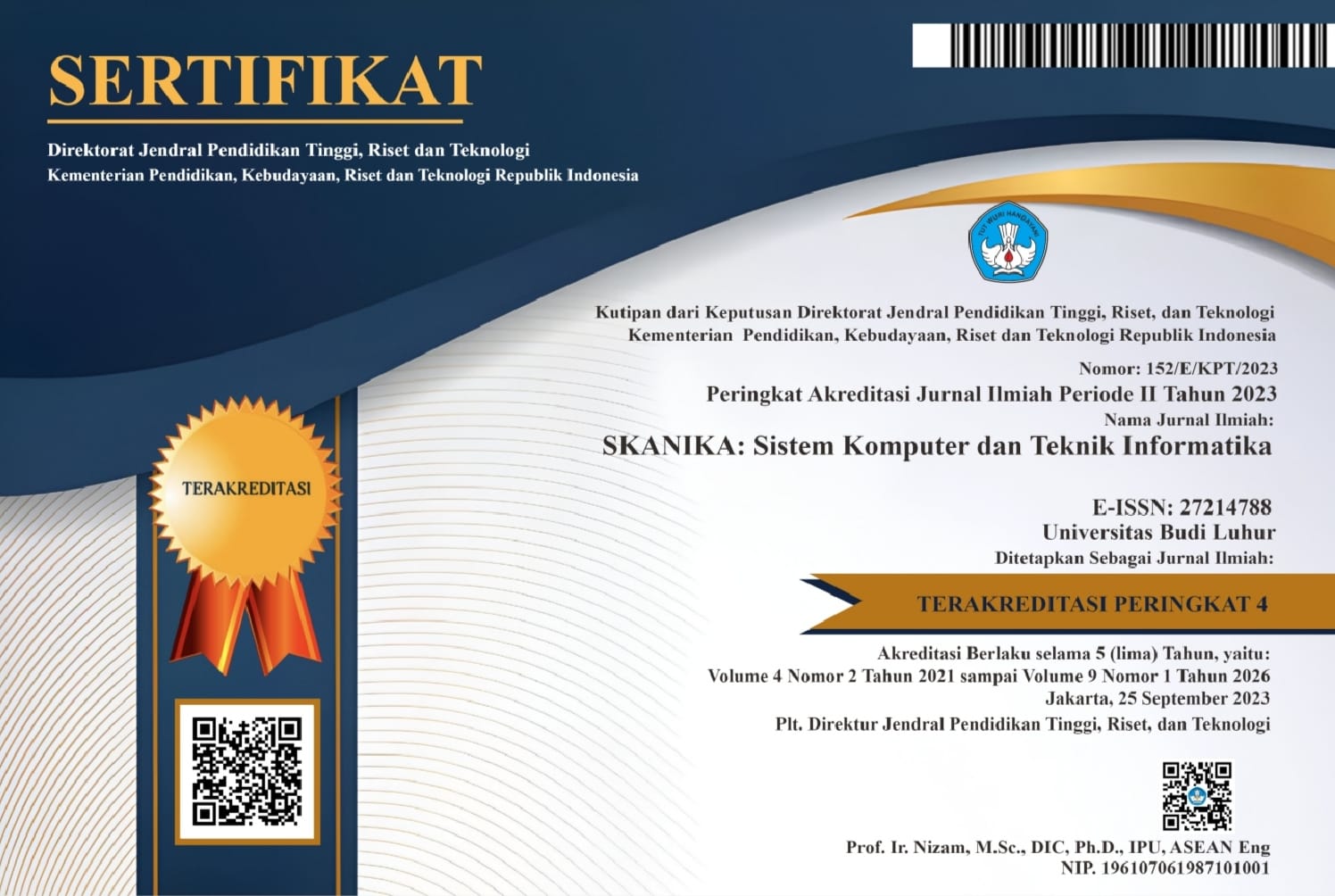SISTEM MONITORING KUALITAS AIR PADA WATER TREATMENT PLANT DI LINGKUNGAN PERTAMBANGAN BATUBARA BERBASIS IOT
Abstract
The availability of safe, clean water is fundamental to human health and well-being, but a growing issue is that natural water sources are increasingly contaminated by various pollutants, especially in mining areas. The water source in the mine comes from rainwater and is collected in a lake used for mining activities, so the water conditions tend to be murky and contain many hazardous chemicals. World Health Organization (WHO) and the Regulation of the Minister of Health of the Republic of Indonesia number 2 of 2023 state that clean water that is suitable for MCK is water that is not cloudy, colorless, temperature between 15 - 35 °C, free of chemicals or with a pH between 6.5 - 9, and Total Dissolved Solids (TDS) water no more than 1000 ppm. The purpose of this research is to provide water quality monitoring at the Water Treatment Plant (WTP) in the coal mining area based on the Internet of Things (IoT). The IoT product created, namely the water quality monitoring system, has several main advantages. This system can monitor water pH, water TDS, water temperature, and water turbidity, and display data in real-time on the monitoring website. On the website, sensor data is displayed in the form of charts, allowing users to monitor significant changes in data. In addition, there is an export feature to excel that makes it easier for WTP technicians to make reports. The tool testing technique is carried out using 15 water samples, the result is that the pH sensor has an accuracy rate of 97.93%, the TDS sensor has an accuracy rate of 99%, the temperature sensor has an accuracy rate of 98.58%, and the turbidity sensor shows a value that matches the water sample used. The results of this study indicate that the IoT system created is effective in monitoring important parameters such as pH, TDS, temperature, and turbidity of water in real-time, which can improve operational efficiency at the WTP and assist technicians in monitoring the WTP which was previously done manually.
Downloads
References
[2] R. Aini, S. Suhartini, I. Gunawan, “Website Monitoring Penggunaan Air PDAM (e-Water) Berbasis Internet of Things,” Jurnal Pengembangan Rekayasa Informatika dan Komputer, vol. 1, no. 2, pp. 129–141, 2023.
[3] Kementerian Kesehatan, “Permenkes No. 2 Tahun 2023,” Kemenkes Republik Indonesia., vol. 151, no. 2, pp. Hal 10-17, 2023.
[4] M. Mursalin and A. Rahmadi, “Sistem Monitoring Kualitas Air Mandi Menggunakan Mikrokontrol Berbasis Arduino pada Panti Asuhan Muhammadiyah Sintang,” Community Development Journal, vol. 4, no. 5, pp. 10574–10580, 2023.
[5] R. Priyatna, F. M. S. Nursuwars, and A. Andang, “Model Sistem Otomatis Water Treatment Plant Menggunakan PLC Berbasis Wireless,” Journal of Energy and Electrical Engineering, vol. 2, no. 2, pp. 12–18, 2021.
[6] D. A. Susilo, J. Maulindar, and M. E. Yuliana, “Perancangan Alat Monitoring Kualitas Air Kolam Ikan Lele Berbasis Internet Of Things,” Innovative: Journal of Social Science Research, vol. 3, no. 2, pp. 4703–4711, 2023.
[7] H. Jatnika, et al., “Monitoring Kualitas Air Berbasis Smart System untuk Ketersediaan Air Bersih Desa Ciaruteun Ilir,” PETIR (Jurnal Pengkajian dan Penerapan Teknik Informatika), vol. 14, no. 2, pp. 181–192, 2021.
[8] N. Nurhalim, et al., “Pembuatan Alat Pemantauan Kualitas Air Sungai di Kelurahan Tirta Siak, Kota Pekanbaru,” Jurnal Pengabdian UntukMu NegeRI, vol. 5, no. 2, pp. 166–172, 2021.
[9] T. Rikanto, A. Witanti, “Sistem Monitoring Kualitas Kekeruhan Air Berbasis Internet Of Thing,” Jurnal Fasilkom, vol. 11, no. 2, pp. 87–90, 2021.
[10] A. Ariyanto, “Monitoring Suhu Box Panel dan Voltase Pengisian Baterai pada Base Transceiver Station Berbasis IoT,” G-Tech Jurnal Teknologi Terapan, vol. 8, no. 1, pp. 444–452, 2024.
[11] T. Widodo, et al., “Sistem Kendali Proporsional Kualitas Air berupa Ph dan Suhu pada Budidaya Ikan Lele Berbasis IoT," JEPIN (Jurnal Edukasi dan Penelitian Informatika), vol. 9, no. 1, pp. 59–66, 2023.
[12] A. M. Muslimin, K. Karim, and T. W. T. Winarsih, “Perancangan Alat Ukur Ph Digital Berbasis Mikrokontroler ATMega32u4 Menggunakan Sensor Ph Meter V1.1,” Jurnal Natural., vol. 18, no. 1, pp. 36–44, 2022.
[13] B. Reforma, A. Ma’arif, and S. Sunardi, “Alat Pengukur Kualitas Air Bersih Berdasarkan Tingkat Kekeruhan dan Jumlah Padatan Terlarut,” Jurnal Teknologi Elektro Universitas Mercu Buana, vol. 13, no. 2, p. 66-73, 2022.
[14] F. R. Rahman, et al., “Otomasi Proses Pengaturan Kualitas pH dan Kekeruhan Air untuk Water Cooling Furnace,” vol. 07, no. 04, pp. 224–230, 2022.
[15] D. Rusmana, “Rancang Bangun Pengaman Sistem Login Menggunakan Metode Captcha,” Incomtech, vol. 10, no. 1, pp. 46–52, 2021.












